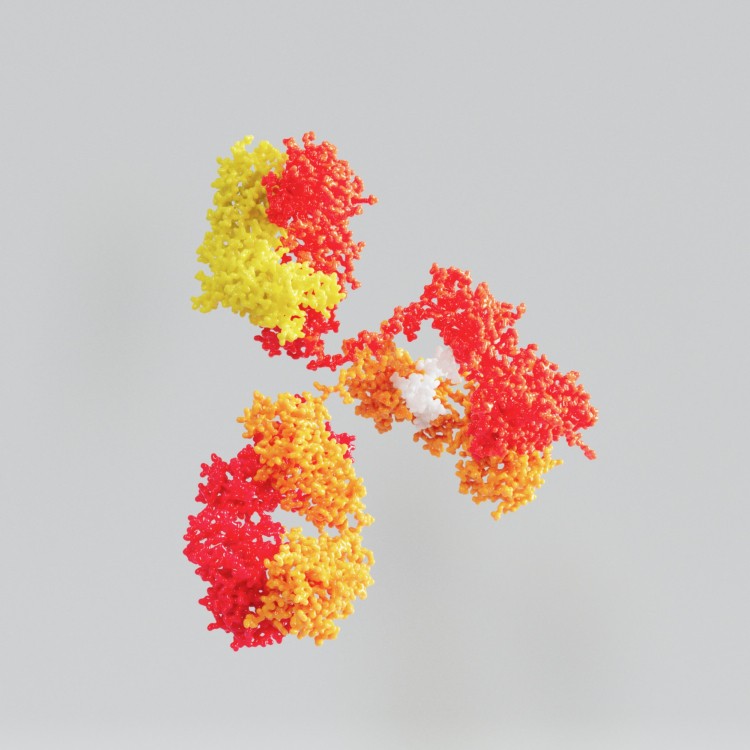

Reference to a mouse antibody is not clear nor does it provide basis when a humanised version of that antibody is claimed
- Considerations as regards the epitope which the E3 antibody might bind do not have any bearing on the fact that the application does not disclose an anti-NGF antibody that binds the same epitope as the E3 antibody.
- CDRs were insufficient for clearly defining the MAb 911 antibody because these are only small fragments of the antibody's complete amino acid sequence(s).
This article is about EPO case: T 0699/19
T 0699/19Background
The divisional patent application no. 10176627.7 was opposed by three Opponents (Os) on all the grounds of opposition under Art. 100 EPC. The OD considered that claim 12 of the main request filed during the Opposition Proceedings extended beyond the content of the application as filed. It read as follows (emphasis added):
“12. An antibody or antigen binding fragment thereof for use of any one of claims 1 to 11, wherein the antibody or antigen binding fragment thereof binds the same human NGF epitope as an antibody as defined in claim 10 or 11.”
The antibodies defined in claim 10 or 11 were either defined by the heavy and light chains of antibody E3 or by the full length heavy and light chain sequences of antibody E3, respectively.
The OD considered that, although the application disclosed a mouse MAb 911 antibody from which the E3 antibody is humanized and affinity-matured, E3 was not defined in the application as filed. Accordingly, the OD decided to maintain the patent in amended form on the basis of auxiliary request 1 wherein claim 12 was deleted from the claim set. P and O1 lodged an appeal against the decision.
Claim requests
The claims of the granted patent, the main request and auxiliary requests relevant for the discussion concerning Art. 100(c) and Art. 84 EPC, read as follows (emphasis added):
Claims of the granted patent and main auxiliary request during Appeal:
“12. An antibody or antigen binding fragment thereof for use of any one of claims 1 to 11, wherein the antibody or antigen binding fragment thereof binds the same human NGF epitope as an antibody as defined in claim 10 or 11.”
Claims of auxiliary request 1 during Appeal:
“12. An antibody or antigen binding fragment thereof for use of any one of claims 1 to 11, wherein the antibody or antigen binding fragment thereof binds the same human NGF epitope as the antibody MAb 911."
Claims of auxiliary request 2 during Appeal:
“12. An antibody or antigen binding fragment thereof for use of any one of claims 1 to 11, wherein the antibody or antigen binding fragment thereof binds the same human NGF epitope as an antibody comprising CDRH1 of SEQ ID NO:9; CDRH2 of SEQ ID NO:10; CDRH3 of SEQ ID NO:11; CDRL1 of SEQ ID NO:12; CDRL2 of SEQ ID NO:13; and CDRL3 of SEQ ID NO:14.”
Extended subject matter
In the appeal, P stated that the application as filed provided support for claim 12 as granted (i.e., support for an E3 antibody) because it disclosed that, in an embodiment, the antibody bound the same (human) NGF epitope as the mouse monoclonal antibody MAb 911. Additionally, the application mentioned that the E3 antibody was a humanised antibody derived by library scanning mutagenesis from MAb 911 and that it had improved affinity but maintained the NGF binding and blocking specificity of MAb 911. To strengthen its argumentation, P further referred to the following statement in paragraph [0290] of the application as filed (emphasis added): "the binding assay is a competitive binding assay, where the ability of a candidate antibody to compete with a known anti-NGF antagonist for NGF binding is evaluated". P considered that the paragraph could serve as basis for claim 12 because of the reference to a competition assay which identifies antibodies that bind to the same epitope. According to P, this reference to a known anti-NG antibody included the E3 antibody.
O1 responded that the application did not provide support for the E3 antibody because it only referred to an antibody that bound the same epitope as MAb 911 without specifying that MAb 911 and E3 bound the same epitope. Moreover, O1 considered that the competitive binding assays described in the application did not refer to the E3 antibody per se and, thus, could not provide a direct an unambiguous basis for an antibody binding the same epitope as E3.
Although the application as filed singled out an antibody that bound the same epitope as the MAb 911 antibody, the Board agreed with O1 that the application did not specifically refer to the E3 antibody. In particular, the Board deemed that considerations as regards the epitope which the E3 antibody might bind do not have any bearing on the fact that the application does not disclose an anti-NGF antibody that binds the same epitope as the E3 antibody. Moreover, the application did not explicitly disclose that the E3 antibody bound the same epitope as the MAb 911. The Board also agreed with O1 that the competitive binding assay P referred to only contained a general reference to a known anti-NGF antagonist and did not directly and unambiguously refer to the E3 antibody.
Clarity
P considered that the reference to “MAb 911” in claim 12 of auxiliary request 1 and 2 was clear because this antibody was described in the state of the art and because the complementarity-determining region (CDR) sequences of MAb 911 were disclosed in the application.
O1 did not agree with P and argued that the term “MAb 911” was an internal designation that did not provide the skilled person with sufficient information for identifying whether or not they were working in the scope of the claim. According to O1, since the application only disclosed the CDRs of MAb 911, and not the complete sequences, this was also insufficient for clearly defining the claimed subject matter in claim 12 of auxiliary request 1.
Since the antibody of claim 12 in auxiliary request 1 was defined as binding the same epitope as the antibody MAb 911, the Board argued that the identity of this antibody was essential for the definition of the claimed subject-matter. No structural or functional features of MAb 911 were defined in the claim, other than the fact that it bound an epitope of human NGF. However, this feature did not provide any information on the amino acid sequence(s) of the antibody MAb 911. Furthermore, the description and drawings of the application did not disclose the entire amino acid sequence(s) of MAb 911. Only the amino acid sequences of the CDRs of MAb 911 were disclosed. Therefore, the Board decided that the CDRs were insufficient for clearly defining the MAb 911 antibody because these are only small fragments of the antibody's complete amino acid sequence(s).
Decision of the Board (of Appeal)
In view of the above, the Board decided that the subject-matter of granted claim 12 extended beyond the application as filed, and that the term “MAb 911” of claim 12 of auxiliary request 1 lacked clarity.
Summary written by the NLO EPO Case Law Team







